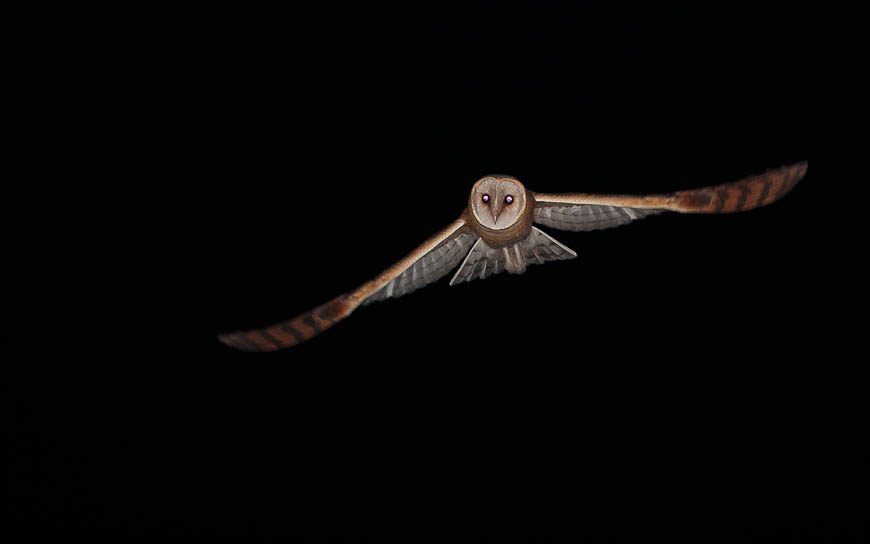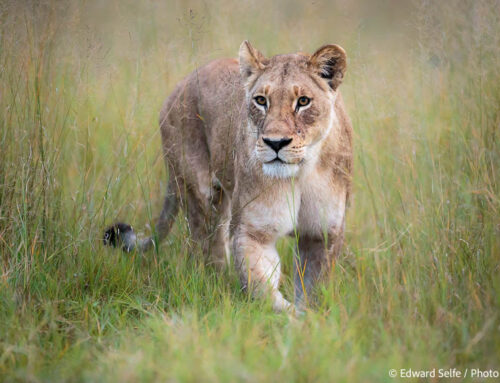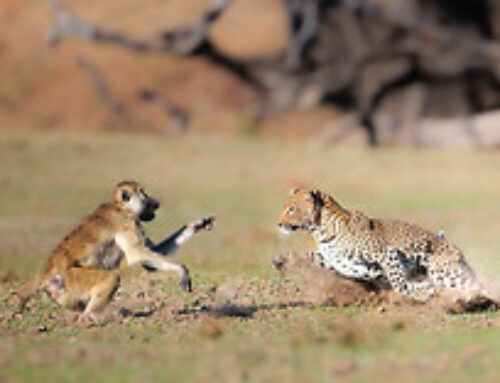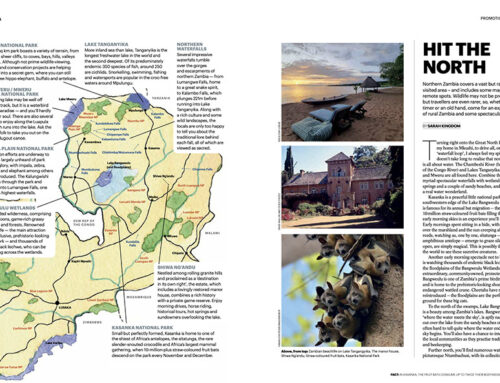Darkness arrives very quickly in Africa. As you watch the rich light of afternoon bathing the area in gold, behind you the sun is racing towards the horizon. Turn to look towards the west and you will find the sun ranging from white to yellow to gold through orange and red to pink…and then gone.
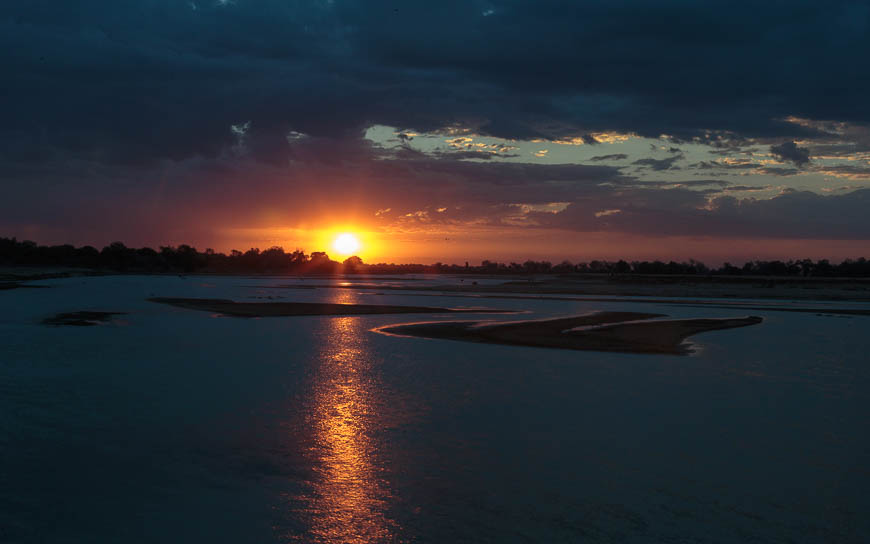
Being so close to the equator, the sun traces a very high arc through the sky. It appears to rise fast, spend much of the day overhead and then rush to the horizon once more. This makes the changeover from day to night, the period of dusk, very brief.
These sunsets have become famous, not least for the “sundowner” drinks of cold beer, G&T or chilled wine that go with them. Sunset also marks the end of the day shift for diurnal animals, and beckons nocturnal animals to stir. In Luangwa, this is a time when the bush briefly falls quiet; the chorus of birds and daytime primates stills and the first calls of night are yet to come.
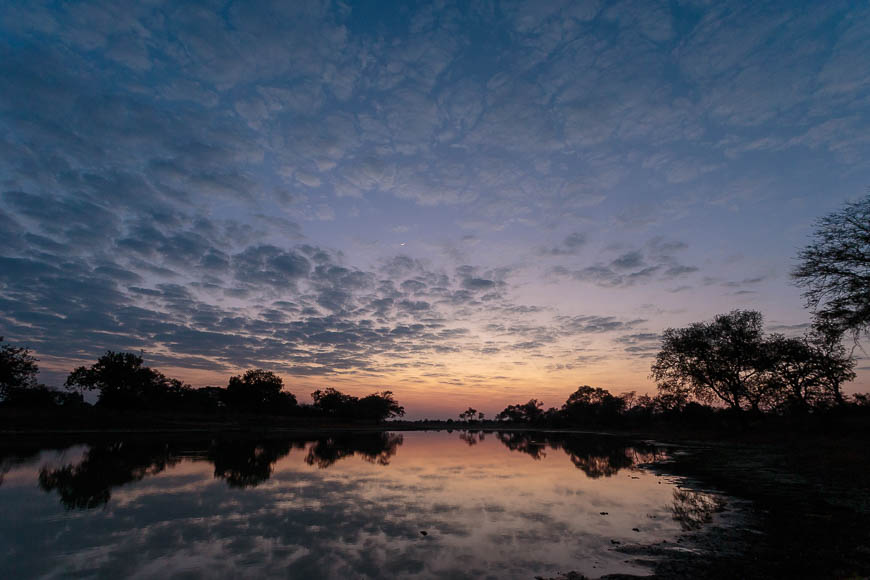
There is a period between sunset and dark when the brightness of the fading sky and that of a spotlight equalise; it’s a very special time which occurs only for a few brief moments. Photos taken at this time can show the subject (lit by the light) set against the sky which still retains some of the coloured glow on sunset. Tree-based subjects work best and the ideal situation is a leopard rousing from its slumbers on an exposed bough.
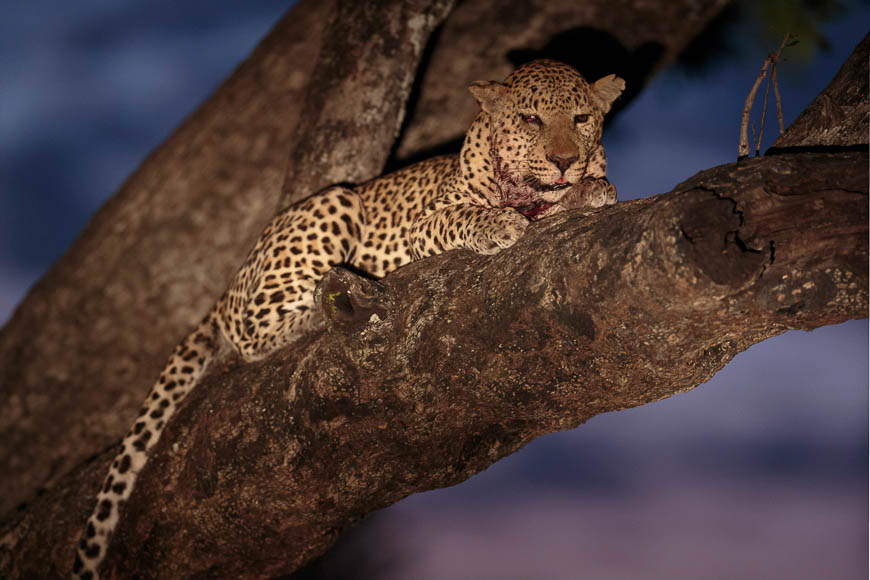
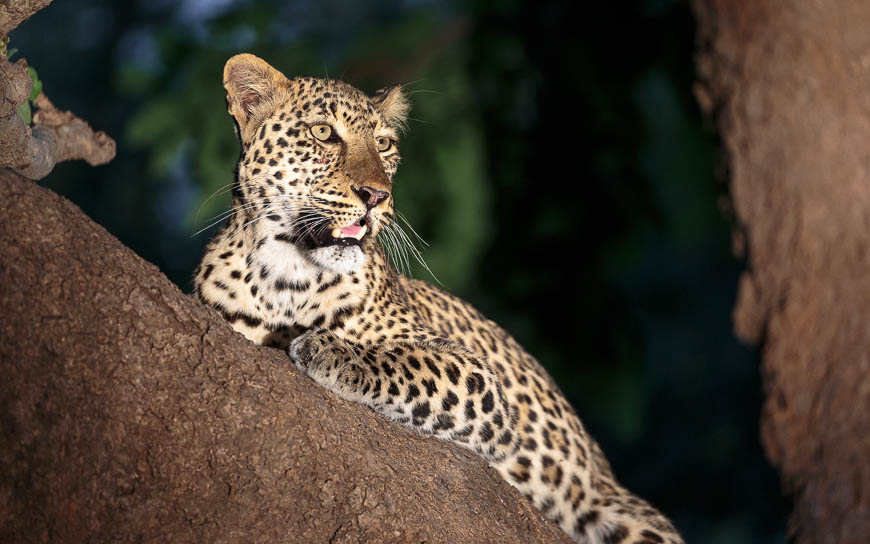
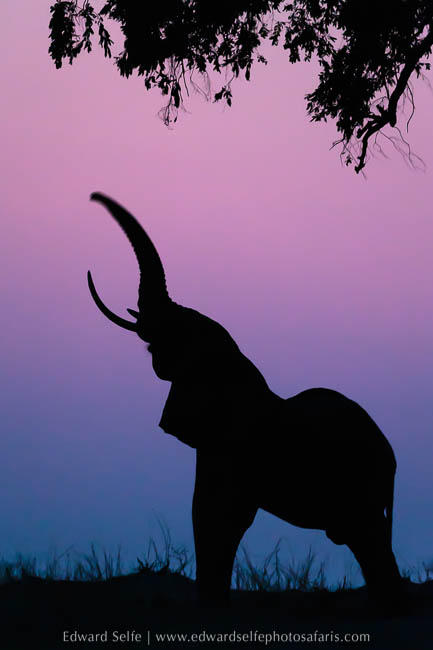
As the darkness thickens and the world becomes hidden from us, we continue with a spotlight to search for the reflective eyes of animals not often seen by day. First to show – nearly always – is a large spotted genet; small, furtive and owner of one of Nature’s longest tails, they forage for insects, rodents, birds and small mammals in bushes, trees and open ground. Occasionally, we find one just as it emerges from its daytime roost, usually a tree hole.
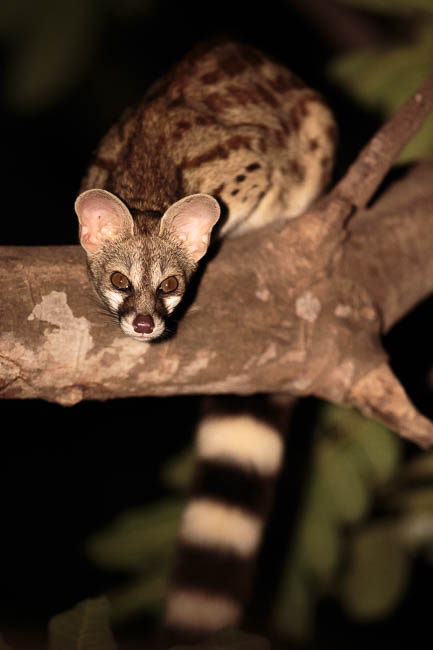
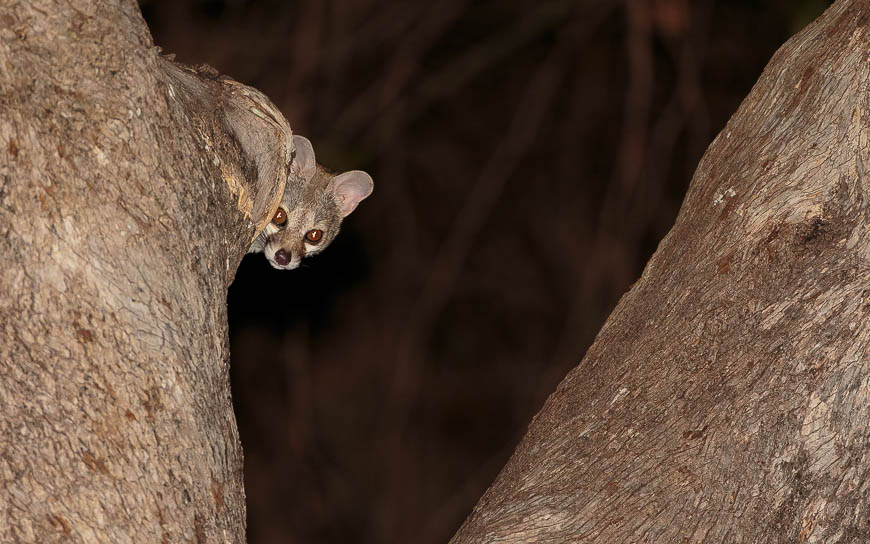
As the bush gets dark, nocturnal creatures begin to call and advertise their territories. It may be the grunting, moaning call of a lion or, very likely, the whooping communication calls of hyaenas gathering their clan members who have become dispersed.
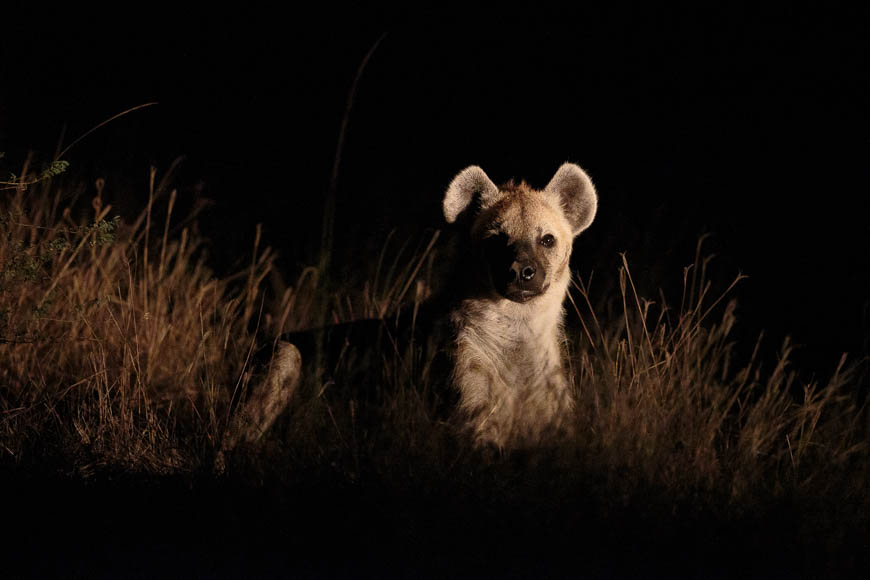
Hyaenas are social and highly intelligent so watching their behaviour might be enough to lead you to a large prize – perhaps a lion kill – or just to another hyaena for ritual greetings and socialisation.
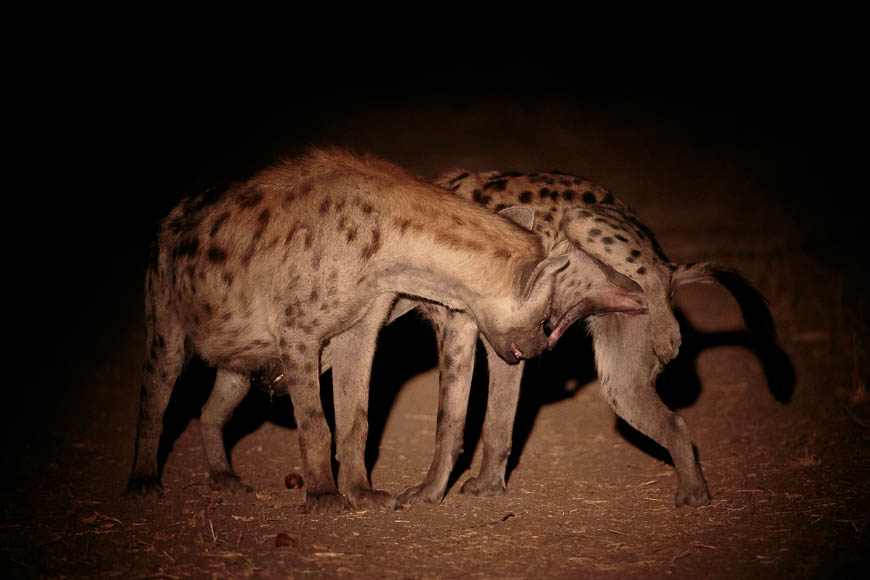
Lions are certainly most active at night, choosing these times (when prey are robbed of their sight) to hunt. While tracking down a distant lion call, you’ll be interrupted by spotting lots of unexpected nocturnal creatures such as perched owls scouring the earth for movement, nightjars fluttering up from the ground to hawk for flying insects and perhaps the most surprising, a chameleon brilliantly seen by the vehicle’s spotter!
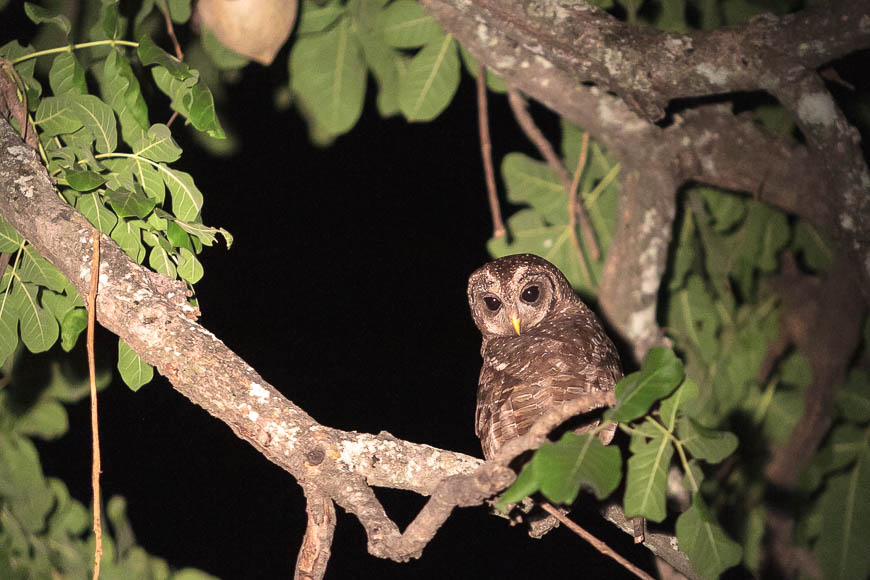
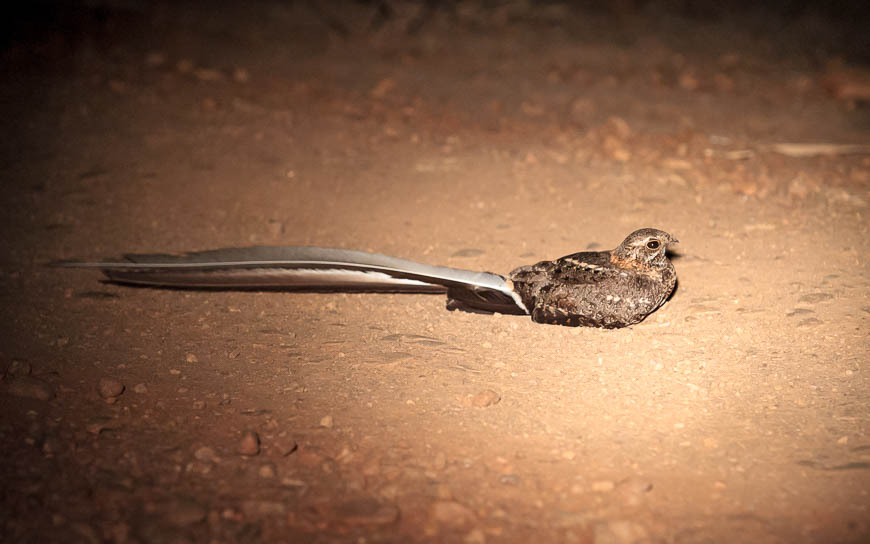
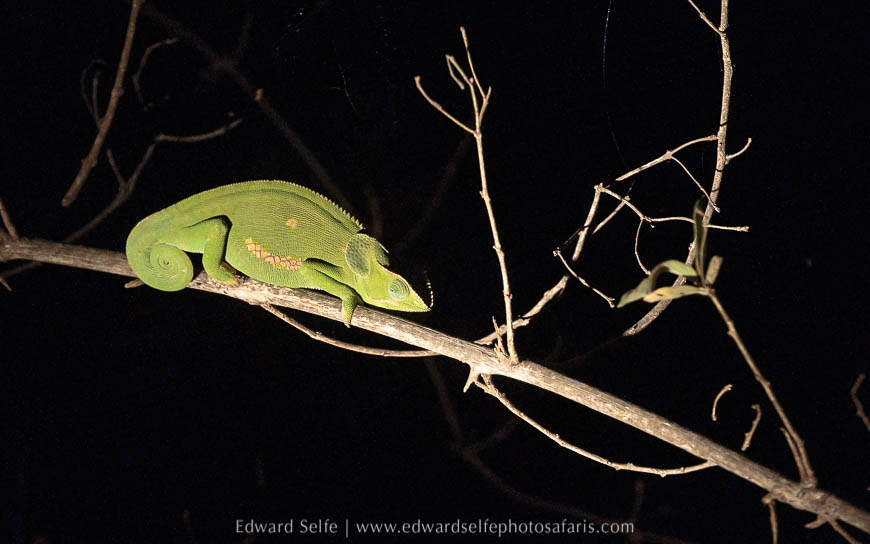
In the end, it will likely be a feeling that tells you that lions are nearby; antelope will be twitchy, you might hear the occasional bark from a baboon, safely perched in a high tree or, if you are stationary, perhaps the muffled moan of lionesses talking to each other as they fan out to hunt. The feeling as low-slung, muscular predators pass near your vehicle, barely acknowledging your existence but well aware of your presence, is something that can only be experienced in the wild.
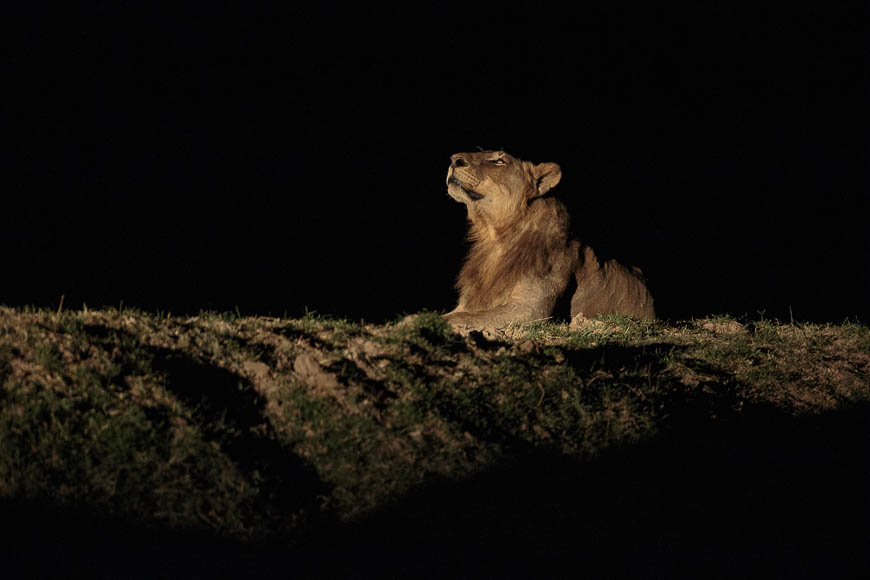

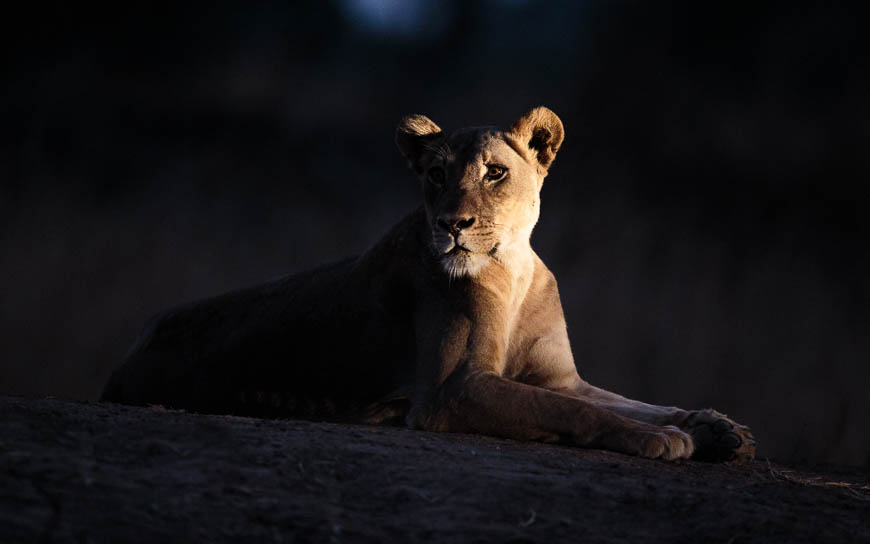
As lions start to hunt, your guide will request that a red filter is put on the spotlight, or the light is turned off altogether, to give both predator and prey their natural chances of success or escape. Rarely in the modern world can we find somewhere that is free from human sound, but as you imagine the lions encircling a small herd of zebras, you’ll find your ears picking out the smallest of sounds and building a picture in your mind.
When the kill occurs, be ready for confusion, noise, aggression and very high levels of adrenaline (not only in the lions). The immediate aftermath can be quite distressing, but by being simply observers, we can know that we had no part in the process and were simply present to document it.
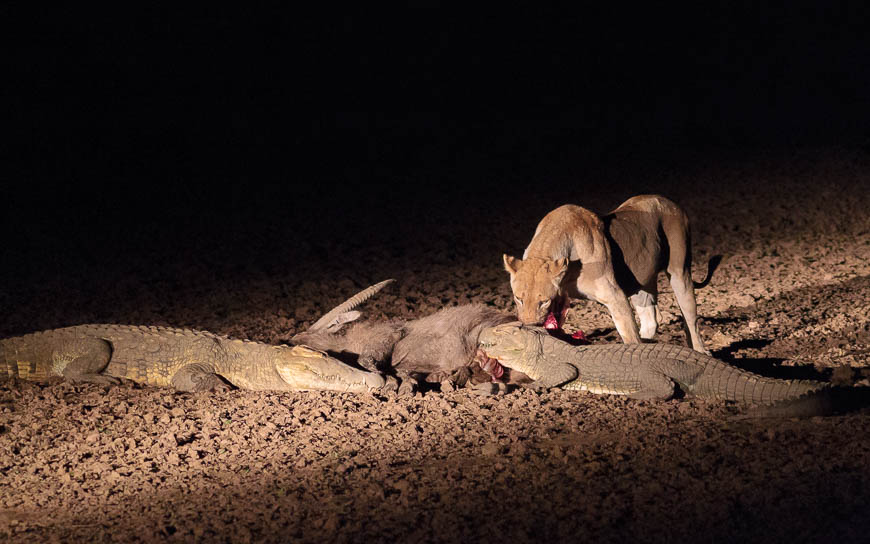
Of course, it is a leopard that evokes the most excitement in safari-goers and we use all our skills and intuition to track down these stunning creatures at night. Whether we find one resting in a tree after a day of feeding, or stealthily approaching antelope nearby, or perhaps ostentatiously patrolling towards a nearby waterhole, it’s always a thrill to find Nature’s finest feline in the wild.
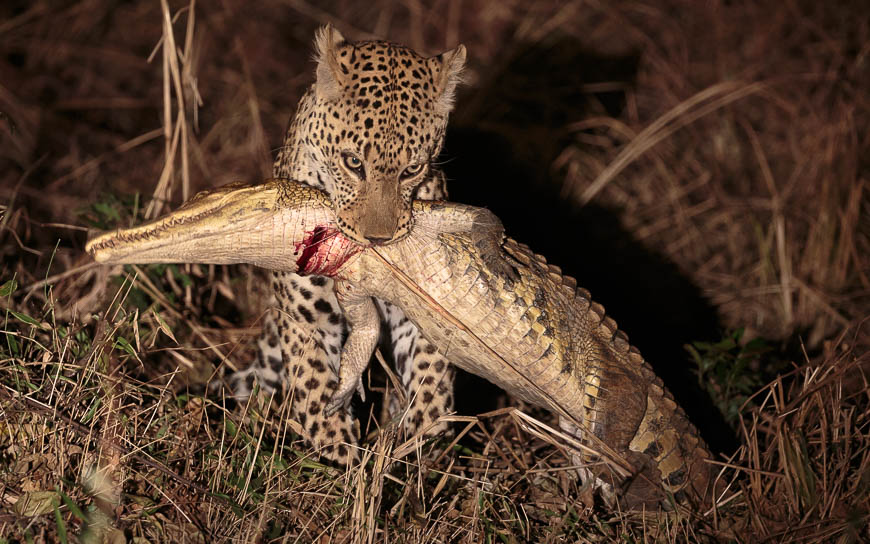
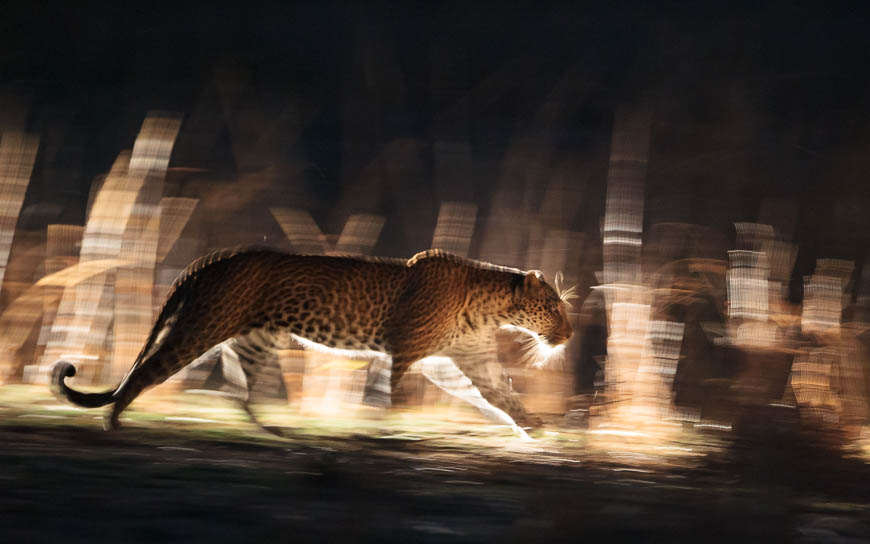
We have to be careful on night drives not to impact the wildlife that we are watching. Spotlights are intrusive so we take care to use white lights minimally (just for photos) and to use red light filters whenever watching game. It is a real privilege to conduct night drives in the South Luangwa, and it is a responsibility that we must use wisely.
Learn how to set up your camera for night photography.
